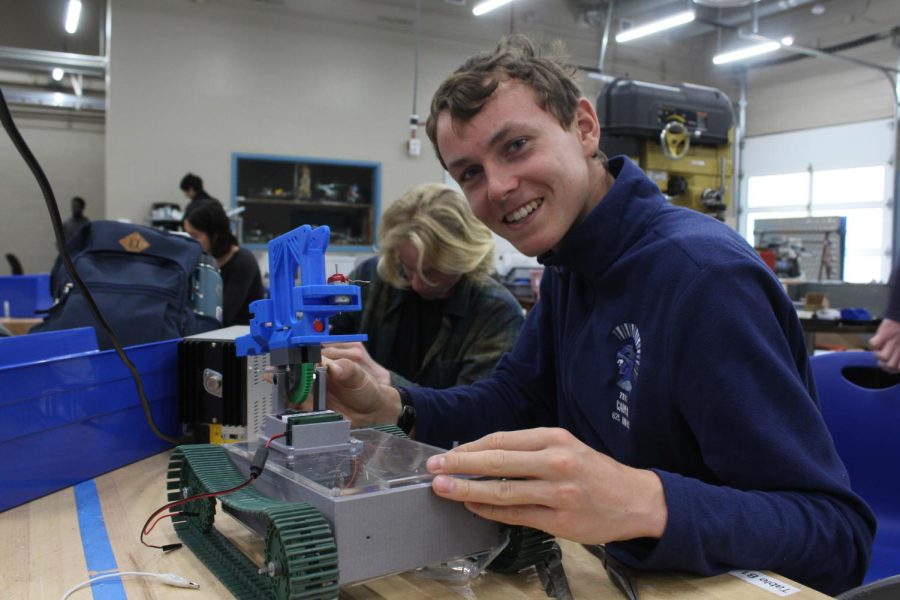Engineering Students Finalize Their NERF Launcher Designs
June 2, 2023
UC students in the second and third periods of the Engineering elective are developing NERF projectile launchers for their final evaluation of the school year.
Engineering Teacher Zachary Scott, who is overseeing the project, said, “The project is called NanoBots and the purpose of the project is that the students are exploring the design process by making dart launchers. The dart launchers have several design features required for success, such as the ability to launch NERF darts at least 15 feet and hit a target that is one foot by one foot.” Several prototypes have been able to shoot over 60 feet.
There are several requirements that the students need to meet for this project. “The launcher has to be able to rotate vertically up to 45 degrees, shoot out at least five darts without reloading, and the vehicle carrying the launcher has to be able to drive and turn 360 degrees,” said Scott.
The students are given different types of materials to modify their launchers to the best of their abilities. “Most students will use a particular microcontroller called ESP32-DevKitM-1 and other materials including the laser cutter, 3D printer, the motor, Robotics VEX parts, wood, acrylic, plastic, ABS plastic, fasteners, standard shop tools such as saws and drills, and the breadboard. In terms of power supplies, each team has a ten-volt battery with rechargeables so we can use it over and over again,” said Scott.
The engineering students encountered challenges that they had to circumvent. Junior Yu Liu said, “We had trouble designing our parts, because they didn’t fit our model. We tackled the issues by discussing the problem as a group and sharing with each other improvements that could be made.”
Senior Matteo Faucheux said, “Our original base, which was made out of wood, completely failed since it was too heavy and the motors directly attached to the drive wheels didn’t have enough torque.”
Scott hopes for the students to complete the project as soon as possible. “They’ll be tested during the last progress period but the date isn’t set. It’s kind of dependent on how many of the teams finish so we can have a competition,” said Scott.
The project is reliant on several factors that will determine the teams’ final grades. “The project is being graded based on the design criteria and mostly, I’m looking for students to actively solve problems every week so they’re also graded on their productivity. Ultimately, some students will be better at coding, 3D printing and all the other different techniques, but I don’t care who is the best. I care that they’re actively problem-solving the whole time,” said Scott.
Scott said, “We’ve been working on the project the whole year at some level. We first started learning about projectile motion, how objects move according to gravity and the applied force, how air resistance affects the distance of travel, the function of motors, coding, and much more.”
The project introduced a new challenge to the students. “It is a little challenging so we have to put in a good amount of work for it, but overall, I think it’s a very fun project,” said Liu. Faucheux added, “I really like it. It brings out the best of my engineering skills.”
Scott said, “I want them to walk away from this project with the ability to solve a problem, work as a team, use math and science principles, and be able to complete similar projects in the future.”
The students are working on the project in room 223 and the Engineering Makerspace.


